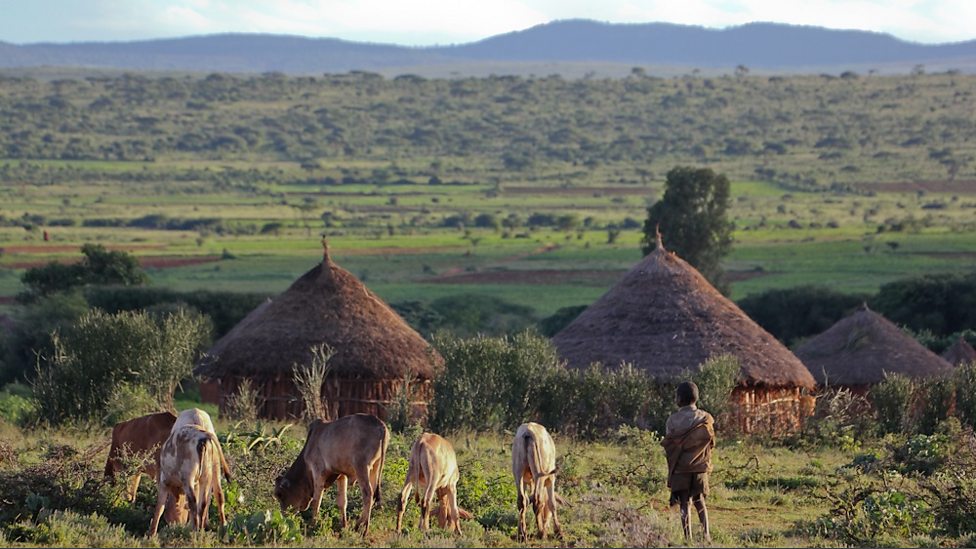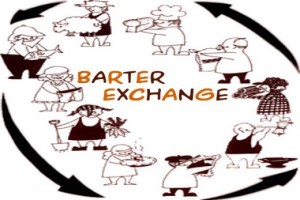WEEK 1
LESSON 1
THE ECONOMY : HISTORY OF MONEY
TRADITIONAL SOCIETIES
Money is part of our everyday life that it is difficult to imagine how anything is possible without it. Goods and services are acquired at a certain price worked out in the currency of our time. Back in history this is not how things were done in traditional societies. Trade was done in a form of bartering. Bartering is an exchange of goods and services without using money. People relied on the environment and area where they lived eg. subsistence farming and hunting.
A traditional society is one in which traditions , beliefs and customs are passed down from one generation to another. Parents taught their children age-old customs such as hunting, fishing , making tools , farming and building shelters. Traditional societies are usually found in rural areas that are farm based and are still following traditional customs and ways of living.
Hunting, gathering and cultivation were the main means of survival in a traditional society. Each person in the traditional society had a role to play. There was no competition between people in traditional society. They worked together towards fulfilling their roles. They created sense of belonging which resulted in very little unrest and discontent among community members. People in a traditional society were more productive because the resource they needed were abundant and readily available and there was no time for idleness or laziness.


LESSON 2 Class activity
Activity 1.1
LESSON 1 - BARTERING
Bartering is the exchange of a good or a service for another good or a service without using money. The word barter comes from a French word barater, which means to trade.
HOW TO BARTER
A person who owns something of value could exchange it for something of equal value. Bartering however, was not a perfect system. Traders could not always on what was a fair trade. Limited goods were more in demand and other goods could be in oversupply. People had to agree, for example, on how many mealies would equal a sack of potatoes or how many fish were enough to trade for a basket
Open the link below to see some items that were used for bartering


LESSON 2
PROMISSORY NOTES
A promissory note is a mote in which the one party (the payer) promises in writing to pay a sum of money to the other party (the payee), either at a specified future time or on demand of the payee under specified terms. 'promissory' means a written and signed promise to pay.
A bank note can be viewed as a promissory note that is accepted in transactions involving goods and services. The South African Reserve Bank (SARB) prints and controls money in South Africa. Cash is the most accepted form of payment in the world
Example of a promissory note:

ACTIVITY 2
1. What is the difference between a payer and a payee?
2. Look at a bank note and write down all the things it has that it could make it a promissory note and all the things it lacks as a promissory note.
3. Make a list of all the documents you have come into contact with that are similar to a promissory note.
WEEK 3
LESSON 1
THE HISTORY OF COINS AND PAPER MONEY
COINS
Although the barter system carried on for many years, it was not always easy to exchange items. Also it was not always fair as sometimes the items exchanged did not exactly match in value and this lead to the use of metal as a means of exchange. At first coins were made from pieces of metal and value was given to items using these pieces of metal.
Over the years copper, bronze, silver and gold were used to make these coins. This gave rise to the coins that we use as money today.

PAPER MONEY
in ancient times goldsmiths built their own safes and vaults and allowed people to keep their money there. They gave people a piece of paper as proof that their money was in the safe. These pieces of paper eventually developed into the paper money that we use today.
ELECTRONIC BANKING
Electronic banking is the accepted form of doing financial transactions these days. Salaries and wages are paid electronically into bank accounts.
USING AN ATM
You can do banking transactions at an ATM anytime of the day or night. The machine will perform some tasks that are normally performed by a bank clerk by simply inserting your bank card in the ATM and giving the machine instruction by selecting options on the screen.
DEBIT CARDS: This card allows you to withdraw and deposit money from and into your account at an ATM. You can also purchase goods using your card. You must have sufficient funds in your account to do this.
CREDIT CARDS: With this card you can purchase goods on credit and pay for them later. The debt goes onto your credit card account, and you must pay back what you have borrowed in monthly installments. You can borrow from the bank when you withdraw cash using the card.
LESSON 2
PROJECT
1.Get information brochures and pamphlets from different banks. Study the information and report to the class.
2.Your teacher will then discuss the different types of banking with the class.
3.come with different bank notes in class, then identify at least 5 security features that can be seen.
Week 4 & 5
LESSON 1
The economy: Needs and wants
Basic needs of individuals, families, communities and countries; primary and secondary needs; unlimited wants; limited resources to satisfy needs and wants.
All people experience life differently. Each person has needs and wants. These needs and wants are continually changing and developing from situation to situation and from time to time. Despite these changes and differences, all people have the same basic needs
Let us look at them: insert pic or video

LESSON 2
Assessment Task
List your needs and
wants in table format (Individual activity) (LO1 AS1)
Read
the definitions of needs and wants below. List five of your needs and five of
your wants in table format. Assess your own performance.
Definitions:
Needs
refer to those things a person needs to be able to survive.
Wants
refer to those things a person wishes to have to improve his or her
lifestyle.
|
My
needs
|
My
wants
|
1.
|
1.
|
2.
|
2.
|
3.
|
3.
|
4.
|
4.
|
5.
|
5.
|
WEEK 6 & 7
The economy: Goods and services
Goods and services are very different. We can see and touch goods, but we experience services.
Goods are thing of value that we buy or make. The are the items that can be seen and touched like groceries, computer and books.
Goods and services; examples of goods and services; producers and consumers; the role of households as producers and consumers; using goods and services efficiently and effectively; how to recycle and reuse goods to satisfy needs and wants

CLASS ACTIVITY
Goods and services
Determine whether the following are example of goods, services or both.
1. You buy a pen for school.
2. You go to the chemist for advice about your health and the buy the medicine
3. You buy a pair of jeans.
4. You pay someone to iron your clothes
5. You pay your brother to run a virus check on your computer.
6. You pay to have your watch repaired and the price includes a new battery.
Week 8-10
Lesson 1
Entrepreneurship: Businesses
Formal and Informal Businesses
Formal Businesses - is any type of business that is registered with a government department , it pays taxes to SARS, employs workers and has an office or a site that it operates from for example Spar, Edgars, Checkers etc.
Informal businesses - are businesses that are not registered with a government department, they do not pay SARS and seldom employs workers for example street vendors. They may be owned by people who are officially unemployed but who are trying to make a living for example people who are making hand-crafted goods like clay-pots, table cloths, beadwork etc.
Lesson 2
Class Activity
1. Give 2 examples of informal business
2. Give 3 examples of retail businesses
3. Discribe 2 advantages and 2 disadvantages of formal businesses.
TYPES OF BUSINESSES
Week 9 Lesson 1
TRADING BUSINESSES
Trading businesses are businesses that buy and sell products. Wholesalers and retailers are trading businesses. Wholesalers are businesses that buy products from producers and manufacturers in bulk, break them down into smaller quantities and sell them to retailers and consumers. Makro and cash and Carry are examples of wholesalers.
Retailers are businesses that buy products from either wholesalers or directly from the manufacturers, they also buy in large quantities and also break them down and sell them to consumers, for example Pick 'n Pay, Checkers, Spar etc.
Lesson 2
MANUFACTURING BUSINESSES
Manufacturing activities usually takes place in factories , examples of well known factories are:
- Unilever - they manufacture soaps, toiletries and food
- Hulamin - they produce aluminium foil and containers
- Koo - they manufacture canned foods

Week 10
Lesson 1
SERVICE BUSINESSES
These are businesses that provide services to other businesses and people in exchange for money. Banking, training,tourism,accommodation ,meals etc, even finding jobs and houses for people are examples of the different services businesses offer.
These are registered with government departments and pay taxes and are also formal businesses. There are also many like repair, hairdressing, takeaway and taxis with are not registered with the government department and do not pay taxes, they are informal
businesses.
Both formal and informal business make products to sell to consumers and for this reason we can say that they are producers. Some businesses produce services while others produce goods.
Lesson 2
Group Activity
Identify the raw materials and examples of the finished product for each business. You may use words or pictures to make your diagram clear.
